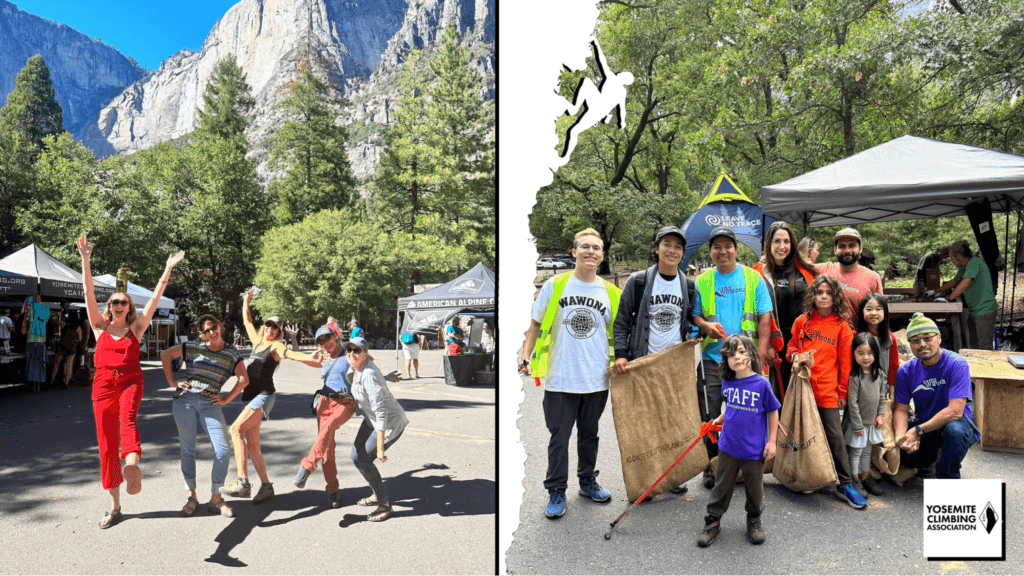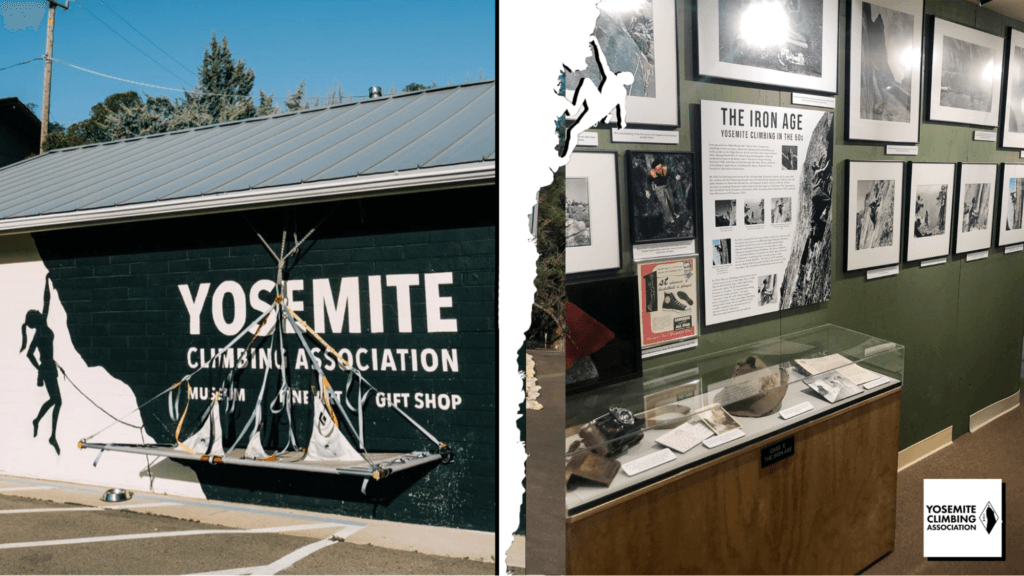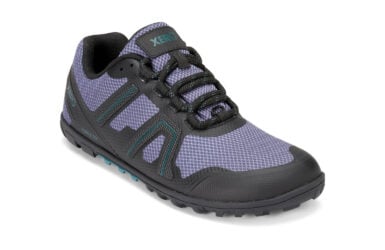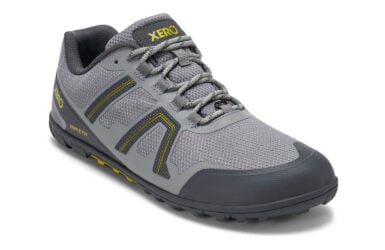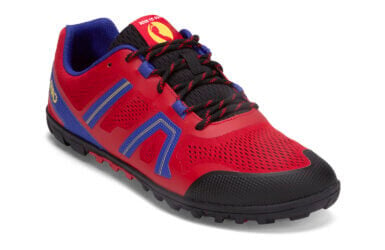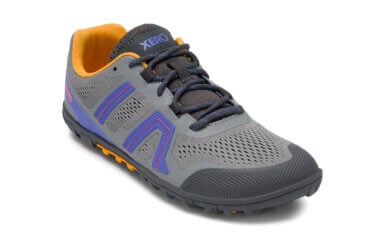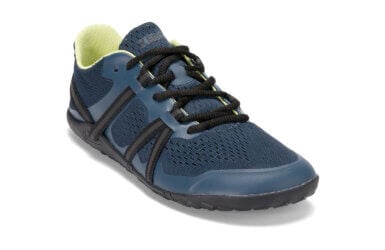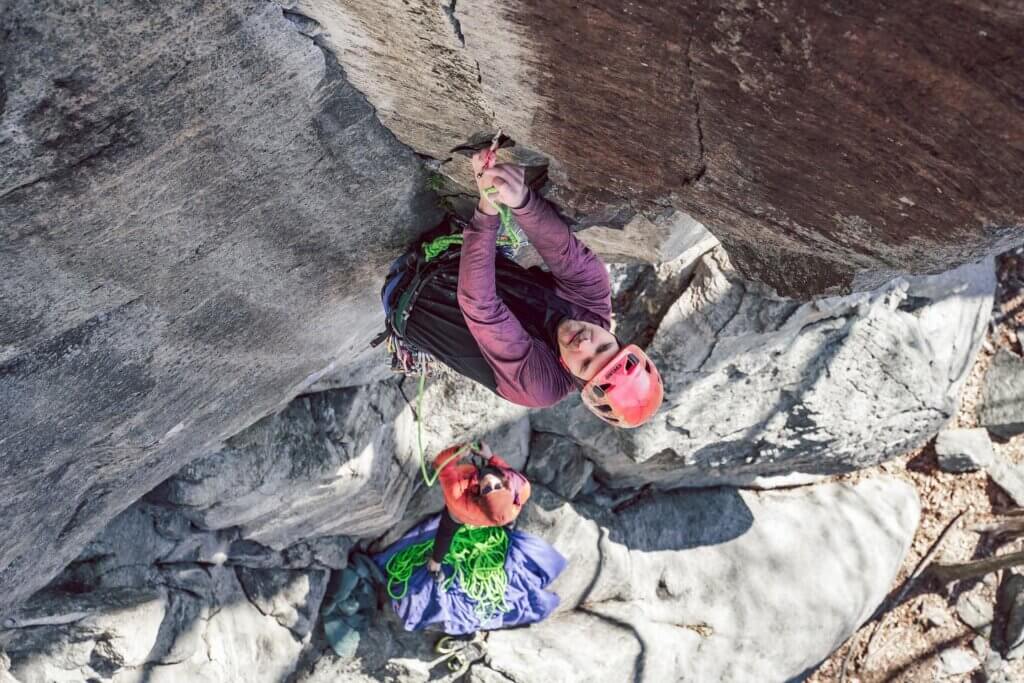
Rock climbing may be an intimidating and scary sport for beginners. Avid climbers will tell you that, once you get started, rock climbing will shape you in many ways.
It’s a challenging sport that requires unique movements and demands your full mind and body. You’ll navigate new, difficult routes you may be unfamiliar with. You’ll push your limits in new ways. Despite the mental and physical demands, it is an extremely rewarding experience.
Perhaps one of the most rewarding parts of rock climbing is the sense of community. Rock climbers are adventure-seekers at their core, but they are generally some of the friendliest and most welcoming people, eager to build friendships through their love of climbing.
Local climbing organizations allow people to mingle with others who share their passion for climbing while fostering a powerful sense of community. But there’s a lot more these groups do that make climbing a rewarding experience.
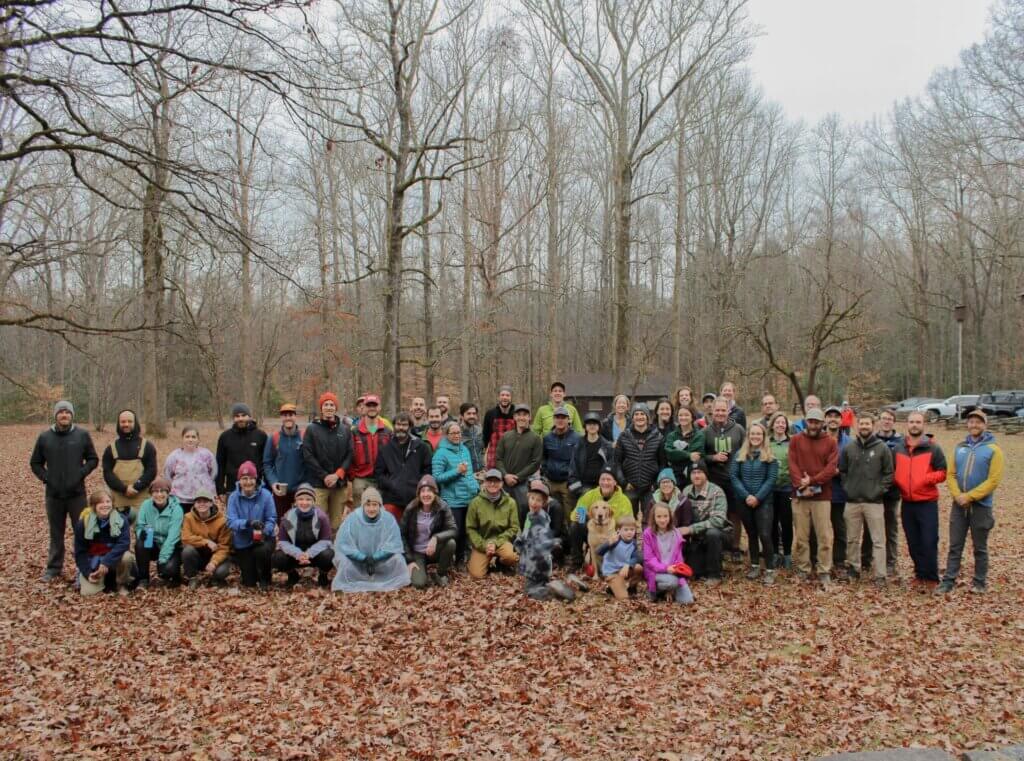
Local Climbing Organizations: Going Beyond Just Climbing
Rock climbers are more than just adventure seekers. Many rocking climbers are nature and wildlife enthusiasts, educators, volunteers, and advocates.
Many of these communities have visions that they set their minds to and execute on. Here are a few great things these communities do.
- Preserve outdoor spaces
- Take care of crags
- Build community
- Raise interest and awareness
- Promote diversity
- Develop new routes
- Monitor wildlife
- Manage trails
- Promote climbing safety
- Advocate
1. Preserve Outdoor Spaces
Protecting outdoor spaces is a huge part of the ethos of the rock climbing community. It’s not just about preserving the hundreds of acres of land to maintain its natural beauty — it’s about ensuring climbing areas remain sustainable and accessible for future generations of climbers.
Making a Difference: Yosemite Climbing Association’s Annual Facelift Event
Since 2003, the Yosemite Climbing Association has cleaned up over 1 million pounds of trash in Yosemite National Park with Facelift and became the first zero waste event in the park this past year. The last 2 years, we have gone to over 20 locations across North America bringing communities together to help bring stewardship in their backyards. Facelift is an event that brings communities together from all backgrounds and helps to preserve our public lands where we recreate.
2. Take Care of Crags
Crags are majestic areas noted for striking landscapes and stunning, distant views. Climbing groups do everything they can to keep them intact, including picking up litter, removing graffiti, and leaving no trace. They will even track crag visitation and usage to monitor whether it can handle the impact of climbers
3. Build Community
These groups are an excellent opportunity to be a part of a community that is enthusiastic about climbing. Many climbing groups will host awesome annual events as fundraisers that go toward the community. Festivals, camping trips, and group climbs offer pivotal moments for climbers to build connections and empower each other.
4. Raise Interest and Awareness
Local climbing organizations take it upon themselves to educate and raise public awareness about climbing. Organizations work to educate and raise the level of interest in a number of different ways, including hosting events. For those who want to learn more about climbing, meeting with members of a local climbing organization is an opportunity to learn the basics from experienced climbers, and gain more interest in the activity.
Making a Difference: Yosemite Climbing Association’s Climbing Museum
In 2022, the Yosemite Climbing Museum has become an invaluable resource to the climbing community and beyond. Through educational and stewardship events, community partnerships, and our museum, we have expanded our reach far beyond the typical Yosemite rock climber. We have the largest collection of Yosemite rock climbing artifacts in the world. Our displays feature a bolt from the first ascent of Half Dome in 1875, stove leg pitons from the first ascent of El Capitan in 1958, Lynn Hill’s shoes from the first free ascent of The Nose in 1993, and so much more. The rich history of Yosemite rock climbing paved the way for big wall climbing, the revolution of clean climbing, and has been the forefront of the development of policies related to climber access and land use.
5. Promote Diversity
As part of nurturing a healthy and vibrant community, many rock climbers actively promote diversity and inclusivity. Climbing groups emphasize the importance of creating a supportive environment for LGBTQ+, BIPOC, those with disabilities, and others, creating a safe space, and ensuring climbing is an accessible activity for everyone.
6. Develop Routes
Route developers play a vital role in the rock climbing world. They create new and exciting challenges for climbers of all levels and enhance access to new areas. Route development involves a deep understanding of the landscape, hours of labor installing bolts, and a commitment to safety and environmental sustainability.
Making a Difference: Western Massachusetts Climbers Coalition
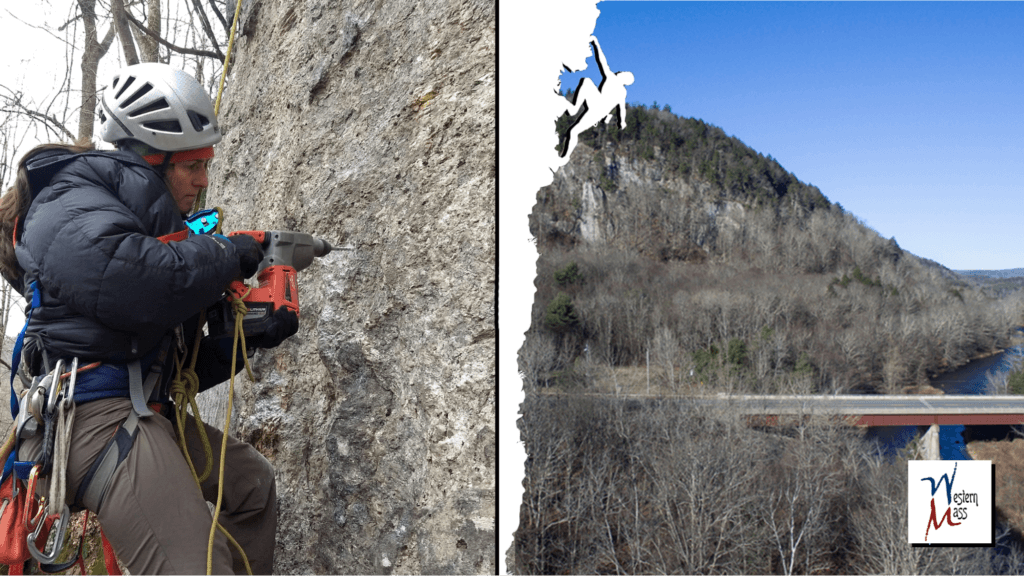
When WMCC discovered the owner was willing to sell Hanging Mountain, the group secured a Climbing Conservation Loan from the Access Fund. With support from the neighboring Ragged Mountain Foundation, they purchased the property in November of 2019.
The organization built a driveway, parking lot, and trail infrastructure and developed the climbing routes. A botanist surveyed the land for protected species, and the state reviewed our plan to establish new trails without impacting those protected species. The cost of the land purchase, driveway, parking lot, trail building crews, shed, and biological surveys totaled over $170,000. Volunteers amassed well over 3,000 hours of work, not including time spent organizing events, writing grants, and fundraising. Today, the WMCC maintains the trails and completes trail and route development on the cliff.
7. Monitor Wildlife
In their commitment to preserving natural habitats, many climbing groups actively monitor and protect local wildlife. Their work helps maintain the balance between the sport and preserving diverse ecosystems. These groups will communicate with their members to announce any closures of areas due to nesting sites.
Making a Difference: Carolina Climbers Coalition
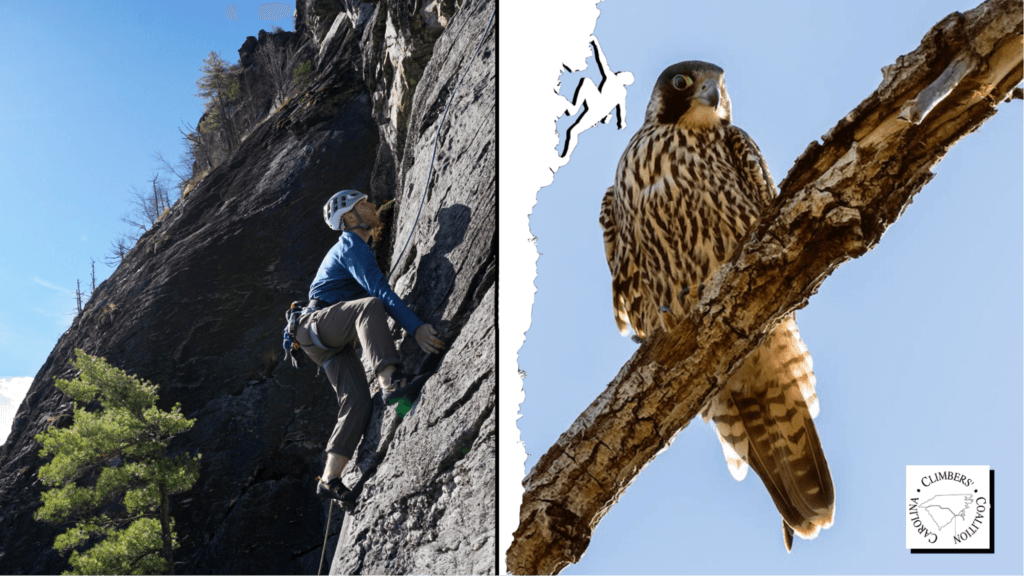
The CCC owns and/ or maintains public access to climbing opportunities on cliffs and boulderfields that contain rare or threatened species. Our land conservation efforts ensure that flora and fauna are protected from housing or commercial development, but outdoor recreational access is not without impacts. To mitigate climbing-based impacts on various species, the CCC work with several agencies including the NC Wildlife Resource Commission to ensure our recreational practices are in balance with species protection. One example is our peregrine falcon monitoring and corresponding seasonal climbing closures based on peregrine nesting locations on various cliffs across the Carolinas, including our own property at Laurel Knob.
8. Manage Trails
Managing trails is essential to ensure climbers’ safety and the preservation of natural landscapes. Climbing groups will raise money to update trail conditions and make renovations so hikers in the area can safely enjoy the outdoors.
Making a Difference: Western Massachusetts Climbers Coalition
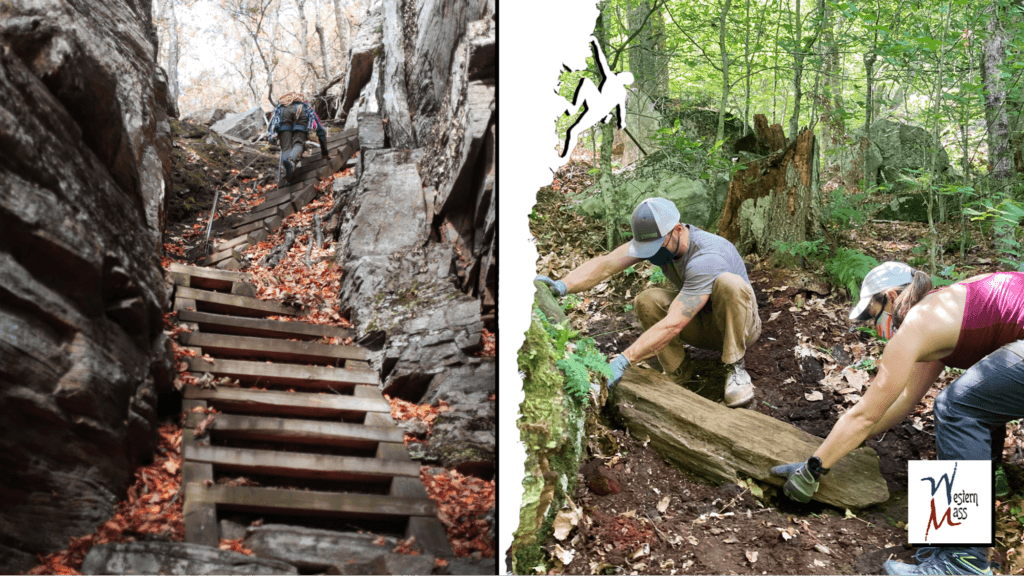
In 2023, WMCC hosted 17 trail stewardship events, running events at various locations in Western Massachusetts on weekdays and weekends from April through November. Volunteers cleared downed trees, ‘brushed’ the trails (clearing any weeds or plants that are growing into the trails), and picked up trash. The group emphasizes durable and sustainable trail maintenance by building stone staircases and retaining walls, and many of our volunteers are experienced with using stone to build trail infrastructure, and often teach this skill to other volunteers who attend trail days. Volunteers will get dirty, move large rocks, and generally get a good workout on their day off from climbing! It’s a great way to get to know other climbers and learn more about your local climbing area.
9. Promote Climbing Safety
Climbing can be a dangerous sport, and these organizations work to ensure the safety of all climbers. These groups replace aging or rotting bolts and hardware, which is critical for maintaining safety.
Making a Difference: Carolina Climbers Coalition
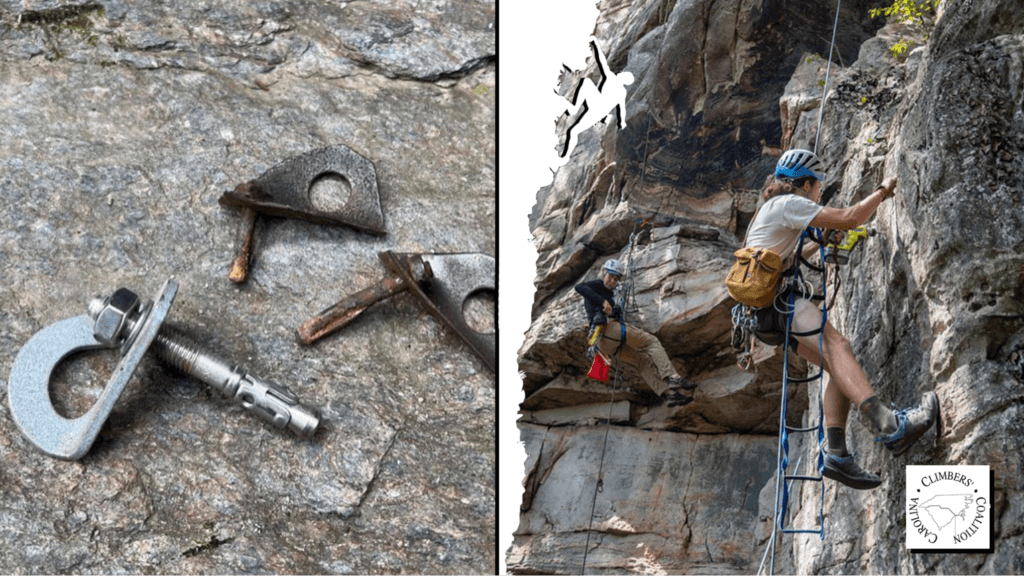
Since the 1980’s, we have witnessed the prolific development of mixed gear and sport climbing routes, often developed using carbon steel bolts and anchors with a life span limited to 25 to 30 years. Today, climbers trust their lives to this aging hardware. The Carolina Climbers Coalition coordinates replacement of fixed gear, that is near the end of it’s useful life, with volunteers that re-equip routes using stainless steel hardware that has an expected life span of 50 plus years. Our local cliffs, due to the explosive growth of the sport, receive more climbing traffic than ever before. The 1100 plus bolts and anchors the CCC has replaced, in just the last 4 years, has created a safer climbing experience for these outdoor enthusiasts. Our trained volunteers, utilizing climber created tools designed to pull out the rusted bolts and portable hammer drills, replace the aging hardware. On average, one hour of volunteer time goes into each bolt and anchor replaced.
10. Advocacy
Local climbing organization groups advocate for access and conservation of climbing areas. Many groups work with Access Fund, a national organization that inspires sustainable access and conservation of climbing areas, collaborating with lawmakers, land owners, and tribal governments to protect land and wildlife.
These groups go beyond just climbing. New members of local climbing groups will improve their climbing skills and technique and be introduced to a community with a vision and purpose bigger than themselves.
Starting Your Climbing Journey
If you’re new to climbing and wish to join a local climbing organization, here are some tips to keep in mind.
Climbing Etiquette
First and foremost, know climber’s etiquette.
When you’re on the crag, it’s important to be respectful of the environment and those around you.
Be sure to…
- Respect other climbers
- Leave no trace
- Stay on established trails
- Reduce the number of climbers in your group
- Minimize the noise
- Stay out of other climbers “fall zone”
- Adhere to closures
Safety Tips
When you start climbing, getting caught up in the thrill is easy. However, climbing can be dangerous, so adhering to safety rules and guidelines is critical.
These tips are not just for your protection but also to enhance your climbing experience.
- Start indoors. Rocking climbing gyms are a safe environment to help you learn the basics of climbing, then you can move to outdoor climbing.
- Plan for the unexpected. Do you know what to do if someone gets injured, the weather changes, or the trip takes longer than planned? Circumstances can change rapidly, so prepare yourself for the unexpected.
- Climb with a friend. Having a partner is important for emergencies, belaying, motivation, and support during climbing.
- Know your route. Study the path, understand the challenges, and plan your moves accordingly. This will help you know what to expect and preserve your energy.
- Know weather conditions. The weather can change rapidly, and being prepared helps avoid dangerous situations.
- Communication. Make sure your group has clear communication terms and knows when to use them. Visual contact may be limited during a climb, so knowing how to communicate can be a lifeline.
- Always wear a helmet. This will not only protect you if you fall, but also from falling debris.
- Start with shorter routes. Avoid long or multi-pitch routes when you begin to climb, as these can be much riskier. Haste, usually brought on by impending darkness or weather, is a major contributor to accidents. Wait to do long routes until you have more confidence and experience.
- Know how to fall. Falling can be scary. Practice safe falling by doing short drops and communicating with your belayer when you’re climbing a sketchy area or think you will fall. Here are some tips on how to fall.
- Tie knots in the ends of your ropes. This is a simple tip that can save your life. Knots prevent the rope from running through belay devices and are a precaution against common climbing accidents.
- Use proper equipment. Invest in quality climbing gear that suits your level of expertise. The right equipment, including climbing shoes, harnesses, ropes, and belay devices, is crucial for safety.
Experienced members of a local climbing organization will reiterate these safety tips to beginner climbers.
Shoes for Climbers
For climbers, your choice in footwear both on and off the crag are important.
Most outdoor climbing shoes are typically hard, pointy, and purposefully squeeze your toes. The right climbing shoe can help you wedge your foot into a crag, or get great grip on a wall.
But those shoes can also leave your feet begging for freedom as soon as you’re done.
Many climbers recommend wearing a different type of shoe for when you’re not climbing, namely, “Barefoot Shoes.”
With a wider, foot-shaped toe box, your toes can spread, relax, and move naturally. A flexible thin sole allows your feet will get used to safely feeling the terrain you’re on.
Research shows that by just walking in barefoot shoes, your feet get as strong as they would by doing a foot exercise program.
And that strength can help you not only tolerate getting squeezed into a normal climbing shoe, but help you be a better climber.
Here are the ways climbers can use barefoot shoes:
- Approach shoes:Barefoot shoes let your feet act as their own support system to build strength naturally. Wearing barefoot shoes is a great way to warm up the feet and ankles before a climb. They are super lightweight, so you can conserve energy by wearing them on the trail, so you don’t have to expend energy unnecessarily before your climb. Their flexibility makes them easy to pack and bring with you.
- Recovery shoes: Climbing shoes are designed to squeeze your toes. After a day on the crag, slipping into minimalist-style footwear is just what you need. The wider, foot-shaped toe box allows your toes ample room to relax and splay.
- Indoor climbing shoes: Many climbers find that minimalist shoes provide the traction and flexibility needed for indoor climbing at a local bouldering or rock climbing gym. Minimalist shoes are designed to mimic the feeling of climbing barefoot while providing a layer of protection.
Here are some of the most popular barefoot shoes for climbers
Interested in finding an approach or recovery shoe that will help with climbing performance? Check out this video from an experienced climber and browse our selection of barefoot climbing shoes.
About The Organizations
A special thank you to the local climbing organizations we included in our article! Read more about the organizations.

Western Massachusetts Climbers’ Coalition
The WMCC is a local 501(c)(3) non-profit volunteer climbers’ organization that works to build inclusive relationships with diverse advocacy groups, state and local governments, landowners, and conservation groups to keep climbing areas open and accessible to climbers from all backgrounds, and to conserve the climbing environment in Western Massachusetts.
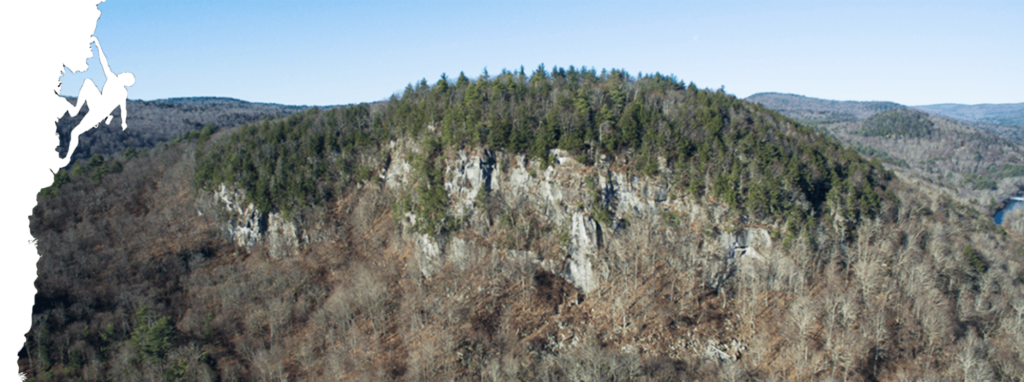
Hanging Mountain, Western Massachusetts
Follow WMCC:
Join | Donate | Facebook | Instagram

Yosemite Climbing Association
The YCA preserves the history of climbing in Yosemite, spreading awareness, promoting local and visitor stewardship of our precious public lands, and creating community through preservation and education.
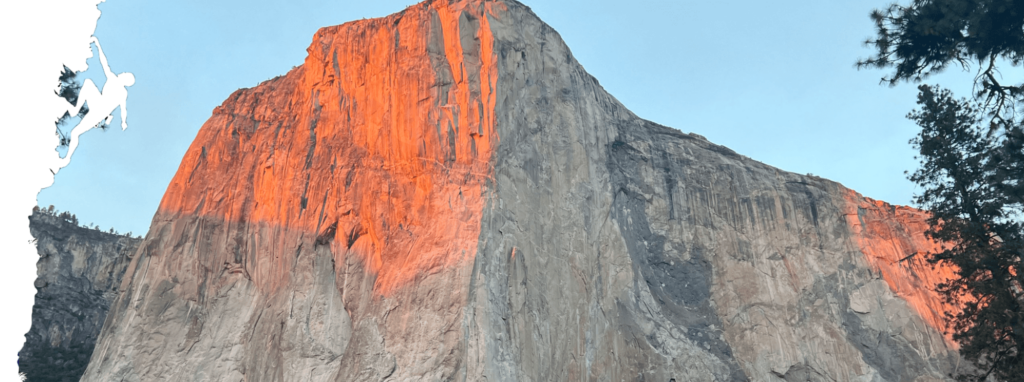
El Capitan, Yosemite National Park
Follow YCA:
Join | Donate | Facebook | Instagram
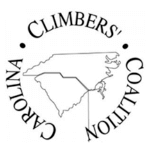
Carolina Climbers Coalition
Founded in 1995, the Carolina Climbers Coalition is a 501(c)(3) nonprofit dedicated to protecting, preserving, and expanding climbing opportunities in the Carolinas. The CCC is part land trust, part advocacy group and all about climbers and the places they love.
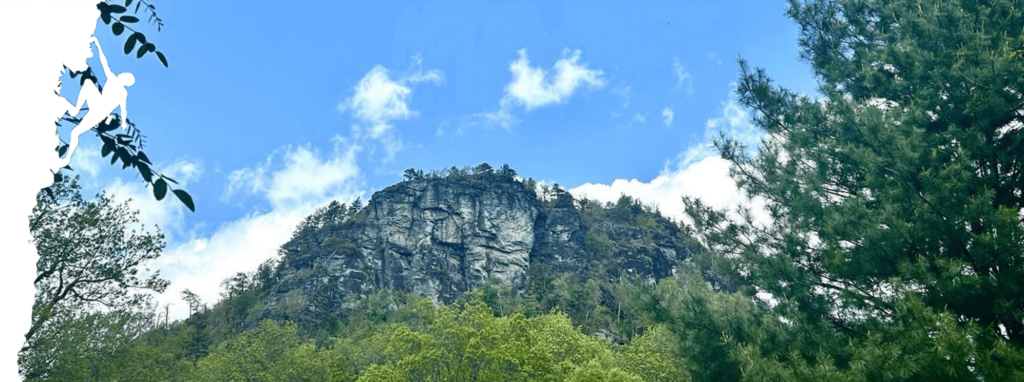
Table Rock, South Carolina
Follow CCC:

